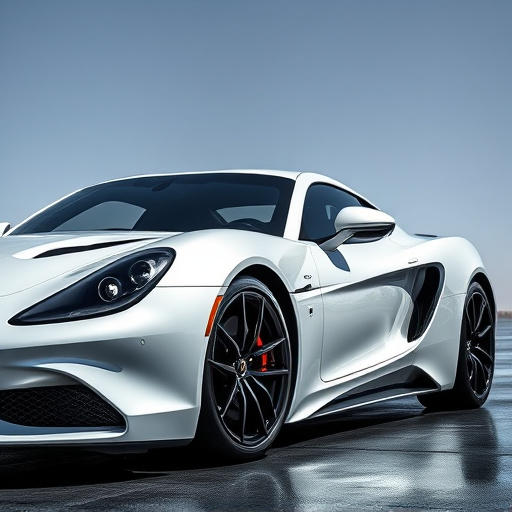Selecting the right air intake filter size is crucial for both vehicle compatibility and performance optimization. Physical dimensions, measured in inches, must match your vehicle's system. A comparison of air intake filter sizes reveals trade-offs between flow rate, maintenance, weight, and power gains. Smaller filters are lighter and easier to install for daily drivers but have limited flow capacity. Larger filters offer higher airflow rates, leading to improved horsepower, ideal for performance vehicles, though they can be harder to install and increase vehicle weight. Air intake filter sizes comparison ultimately suggests choosing mid-size filters for street-driven vehicles or larger filters for track-focused or modified cars based on individual needs.
Looking to optimize your vehicle’s performance? Understanding the right air intake filter size is key. This comprehensive guide delves into the intricacies of air intake filter sizes comparison, offering a detailed breakdown of how to select the ideal filter based on unique vehicle needs. From understanding filter sizes and exploring influencing factors to evaluating popular options, we equip you with insights for an informed decision that enhances engine efficiency.
- Understanding Filter Sizes: A Comprehensive Guide
- Factors Influencing Air Intake Filter Size Selection
- Comparing Popular Filter Sizes: Pros and Cons
Understanding Filter Sizes: A Comprehensive Guide

When considering an air intake filter, understanding its size is paramount. Filter sizes are typically measured in inches, indicating the height and width of the filter element. This physical dimension directly influences compatibility with your vehicle’s air intake system. An incorrect fit can lead to inefficient airflow or even damage to the engine.
Air intake filter sizes comparison becomes crucial for performance enthusiasts. Different vehicles have varying requirements, and using a filter that doesn’t align with these specifications can hinder power output. A larger filter might offer better flow, but it could restrict air entry, while a smaller one may allow more air but potentially trap contaminants. Therefore, matching the filter size to your vehicle’s design and intended use is key to ensuring optimal engine performance and longevity.
Factors Influencing Air Intake Filter Size Selection

When selecting an air intake filter size, several factors come into play, offering a nuanced approach to choosing the optimal option for your vehicle or system. Firstly, consider the engine’s requirements; different engines have varying air intake needs, and filtering media must align with these demands. For instance, high-performance engines often benefit from larger filters that can handle higher airflow rates without compromising efficiency.
Secondly, the environment plays a significant role. Outdoor conditions like dust, pollen, and debris levels impact filter selection. In regions with high contamination, larger filters with finer media may be necessary for sustained performance. Additionally, air intake filter sizes comparison reveals that larger filters often provide better flow rates, ensuring optimal engine performance. However, they might require more frequent maintenance or replacement due to increased dirt accumulation.
Comparing Popular Filter Sizes: Pros and Cons

When comparing popular air intake filter sizes, understanding the pros and cons of each is essential for optimal performance and efficiency. Smaller filters offer lighter weight and easier installation, making them appealing for daily drivers seeking a straightforward upgrade. However, their limited flow capacity can hinder power gains, especially in high-performance vehicles. Larger filters, on the other hand, provide enhanced airflow, resulting in improved horsepower and torque, particularly beneficial for race cars or modified engines. Yet, they may be more challenging to install and could increase vehicle weight.
The air intake filter size you choose ultimately depends on your specific needs. For street-driven vehicles, a balanced approach with mid-size filters can provide a good compromise between performance and convenience. In contrast, track-focused or highly modified cars may demand larger filters to meet the increased demands of their engines. This comparison highlights the importance of considering your vehicle’s requirements before selecting an air intake filter size.
When it comes to choosing the right air intake filter size, a thorough understanding of your vehicle’s requirements and environmental factors is key. By considering the pros and cons of various popular filter sizes, you can make an informed decision that enhances engine performance while ensuring optimal airflow. A thoughtful comparison of air intake filter sizes allows car enthusiasts to navigate this aspect of vehicle customization effectively.














